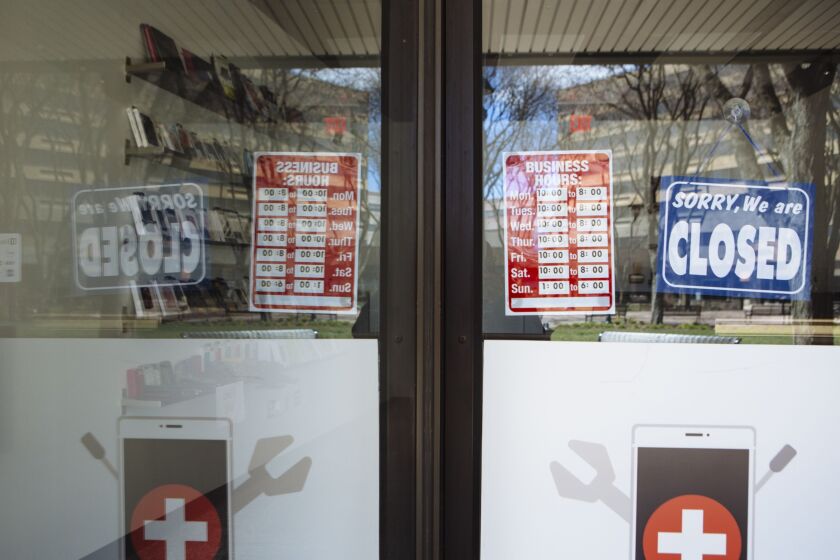The Small Business Administration and the Treasury Department unveiled a simpler loan forgiveness application for the Paycheck Protection Program to reflect changes in the PPP Forgiveness Act, which was signed into law this month and provides more flexibility to small businesses to receive forgiveness on their SBA-backed loans.
The PPP was included as part of the CARES Act, the $2.2 trillion program that included economic impact payments to individuals and aid to businesses in response to the novel coronavirus pandemic. The program initially launched on April 3 with $349 billion in funding to help small businesses keep their doors open and retain their employees. The loans would be forgiven as long as businesses retained their employees for up to eight weeks.
Gregg O'Connor is a vice president at Stout. He has experience providing domestic and cross-border tax due diligence and tax structuring services to both private equity and strategic clients. He has extensive experience across a broad range of industries, including technology, media & telecommunications, healthcare, business & professional services, industrial, and consumer products. He advises private equity firms as well as public and private companies throughout the M&A transaction lifecycle. Prior to joining Stout, he was a manager in PriceWaterhouseCoopers' M&A Tax group. He also worked at KPMG in the M&A Tax group and Grant Thornton on the International Tax team.
Laura Cave is the Chief Brand Officer at Paytient, a healthcare technology company building flexible payment solutions to help people access and pay for care. Laura has played a pivotal role in shaping the narratives of innovative healthcare companies, including Oscar Health, K Health, and Ansel Health. At Paytient, she champions financial solutions that empower employees and health plan members to manage medical expenses without financial strain.
Wilbur Jenkins is the Executive Vice President & Chief Operating Officer at WoodmenLife — an industry leader with more than $11 billion in assets — where he leads Core Operations, Human Resources, and Strategic Initiatives with a focus on driving digital transformation to enhance the customer experience. His career includes senior roles at Argo Group International Holdings and Hartford Financial Services Group. Jenkins is known for his ability to lead cross-functional teams across enterprise-wide functions to achieve strategic goals.
However, many small businesses had trouble accessing the loans or applying for them, and the funding quickly ran out as larger companies managed to get the loans with the help of their banks. Congress provided another $320 billion and the program resumed on April 27. But the rules and eligibility and forgiveness criteria have been changing constantly, prompting many businesses to take a wait-and-see attitude. Around $120 billion to $130 billion is still left in the program, and it doesn’t run out until June 30. Lawmakers have expressed frustration that the Treasury and the SBA are not providing more transparency about which businesses have gotten the loans and for how much.

In an effort to encourage more businesses to sign up and to alleviate concerns about being able to get the loans forgiven for businesses like restaurants that haven’t been able to open to customers, Congress provided more flexibility by passing the Paycheck Protection Program Forgiveness Act earlier this month. It extends the covered period from eight weeks to 24 weeks. It also amends the requirement that no more than 25% of the loan forgiveness amount be attributed to non-payroll costs and allows up to 40% to be used for non-payroll costs. The bill also included several other changes, such as extending the deferral of payments of loan principal, interest and fees, from the current six months, until the date when the SBA pays the forgiveness amount to the lender.
The new loan forgiveness application from the SBA reflects these changes. Along with revising the full forgiveness application, the SBA is also introducing a new EZ version of the forgiveness application that applies to borrowers who:
- Are self-employed and have no employees; or
- Did not reduce the salaries or wages of their employees by more than 25%, and didn't reduce the number or hours of their employees; or
- Experienced reductions in business activity as a result of health directives related to COVID-19, and did not reduce the salaries or wages of their employees by more than 25%.
The EZ application requires fewer calculations to be done and less documentation is needed for eligible borrowers. Details about the applicability of the various provisions are available in the instructions accompanying the new EZ application form.
Both applications give borrowers the option of using the original eight-week covered period (if their loan was made before June 5, 2020) or the extended 24-week covered period provided under the new law. The SBA and Treasury said the changes would result in a more efficient process and make it easier for businesses to realize full forgiveness of their PPP loan.
Click here to view the EZ Forgiveness Application.
Click here to view the Full Forgiveness Application.
Separately, the payroll company Paychex released the PPP Loan Forgiveness Estimator and Forgiveness Report as part of its Paychex Flex set of cloud-based HR software to help small businesses keep track of their PPP loans and loan forgiveness requirements last week. It includes changes from the PPP Forgiveness Act. Accountants can access the Forgiveness Estimator for each of their clients through the Paychex AccountantHQ dashboard to provide more strategic consultation and help clients optimize PPP loan forgiveness.
Another company, Smart Communications, introduced a PPP Loan Forgiveness Application Solution on Wednesday to simplify applications and speed processing for banks and other lenders.



